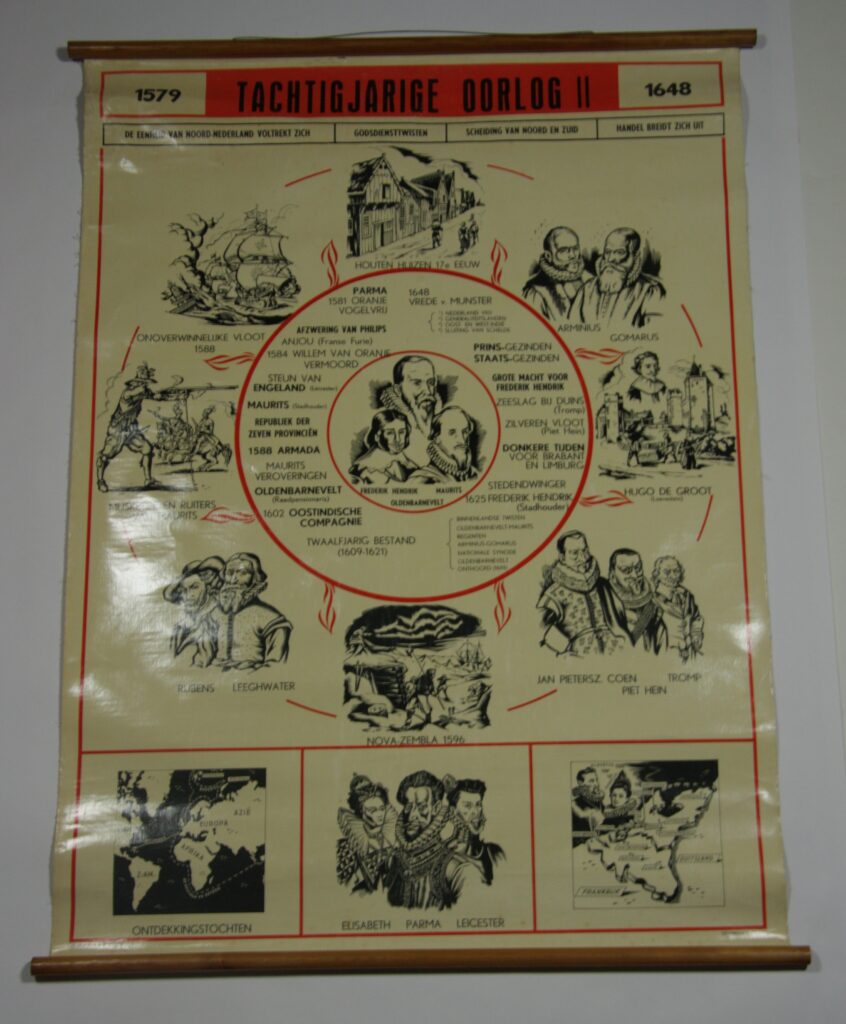W.A. Lommer (author), F. Zenner (artist), Schoolplaat met als titel; 1579 Tachtigjarige Oorlog II 1648 (School poster with the title: 1579 Eighty Years’ War II 1648), 1950-1980

In the first half of the 16th century the seventeen counties of the Netherlands formed part of the Empire of the Spanish Emperor Charles V. Charles wanted to expand his power in the Netherlands, whilst the counties with their own rules and laws want to remain as independent as possible. The Emperor also demanded large financial contributions for his wars, and the Catholic ruler cracked down on supporters of the Reformation, who wanted reform within the Catholic Church.
Charles’ son Philip II succeeded his father in 1555, and continued his father’s strict religious policies, possibly even more harshly. Resistance arose in the Netherlands: in 1566 the Beeldenstorm (or Great Iconoclasm) erupted. Stadholder William of Orange led the uprising. Philip sent the Duke of Alva to the Netherlands to restore order. The Uprising, better known as the Eighty Years’ War, began.
The uprising resulted in the Netherlands splitting into two new states in 1588: the southern counties, which were loyal to the Spanish king, and the independent Northern Republic of the Seven United Netherlands. Led by stadholder Maurits (the son of William of Orange and Anna of Saxony) the Republic’s army grew ever stronger. Flourishing trade meant that money poured in.
In 1609 the Twelve Year Truce led to a temporary cessation of the war against Spain. However, a religious conflict between Remonstrants and Counter-Remonstrants almost resulted in a civil war within the Republic.
After the truce the army under stadholder Price Frederik Hendrik (Maurits’ half-brother, the son of William of Orange and Louise Coligny) achieved a number of important victories over the Spanish, including at sea.
The Eighty Years’ War finally ended in 1648 with the Treaty of Münster. The Dutch Republic was recognised internationally and became an independent state.
This school poster from the third quarter of the 20th century shows a number of important moments in the Eighty Years’ War.